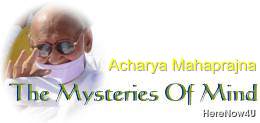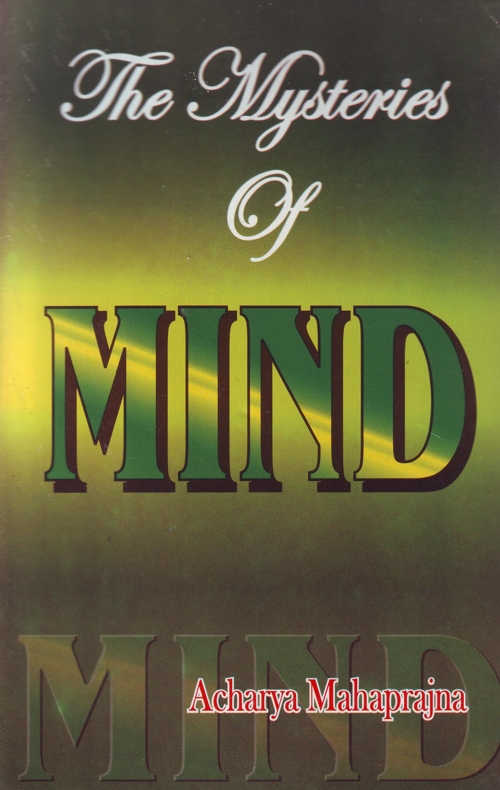
The ascent of vital energy is the first step in sadhana. It is also called tapa (austerities). Tapa consists in collecting the vital energy and driving it upwards. But there will be a great commotion before it turned upwards. The paths of all great revolutions are paved with commotions and explosions. But if sufficient energy has not been stored, there will be no commotion. If we want to collect energy we must be parsimonious in spending it. Otherwise there will be no commotion. Anyhow, we have to push up the vital energy.
The first kind of tapa is fasting. A fasting and hungry practitioner will be able to collect enormous energy. Even the food we eat produces energy but it can only maintain the body. It simply activates the cells of the body and is not sufficient enough to bring about commotions in consciousness for which we need subtle energy. Subtle energy can be produced by tapa and bhavana (contemplation). If the practitioner avoided drinking water during a period of fasting, he will produce extra energy. We can also produce energy by remaining exposed to heat. Every deed we do needs energy. The more action, the more the expenditure of energy. Physicians prescribe rest to the patients so that they may gain energy. Rest enables us to collect energy. It is on this basis that the practitioner is called upon to restrain his body, mind and speech so that he may collect as much energy as possible.
How to push the vital energy upwards? Various sitting postures help us in collecting energy. Ordinarily we do not understand and appreciate the value of sitting cross-legged or the lotus like sitting posture or of sitting with the knees bent upwards. In sa dhana the sitting postures have been recommended for specific purposes. They enable the practitioner to push his energy upwards by exerting pressure on the body.
Somebody told Mahavira that he wanted to understand the practice of brahmacarya or celibacy. He was advised to perform kayotsarga or relaxation and restraint of the body in a standing posture because this posture carries vital energy upward and the bloodstream downwards. Sarvangasana, slrsasana, vrksasana and padmasana postures push vital energy upwards. All the physical postures recommended for meditation are meant to serve the same purpose. The upward movement of energy brings about the trans formation of personality which happens with a sudden bursting of energy. For the ordinary practitioner there is a dividing wall between the three auspicious lesyas and the three inauspicious lesyas, which it is difficult for him to pierce. This wall gives way with the explosion of energy and the emergence of consciousness. As soon as this has happened the practitioner comes into an area illuminated by the three auspicious lesyas i.e. the tejolesya the padma lesya and the suklalesya. He becomes more and more enlightened.
The science of Ayurveda says that the heart is the seat of the soul as well as of energy. It is from the heart that the upward movement of energy begins. This movement begins when the practitioner becomes illuminated by the tejolesya at the conclusion of arta-raudra meditation and at the beginning of dharma dhyana. He then enters into the enclave of the padma lesya or yellow coloration of the soul. His consciousness begins to expand and he begins meditation on the red colour and the ajna cakra.
The next object to be meditated upon is the sahasrara cakra, which belongs to the field of sukladhyana or meditation of the white colour. There is perfect harmony in this meditation. This is a completely illumined area and once the meditator has entered into this area, mental tendencies calm down and the pollution of the soul comes to an end resulting in the purity of the heart. Dharma lesya (auspicious coloration) is the entrance door of the spiritual realm. It should, however, be noted that all the inauspicious colorations of the soul do not disappear all of a sudden. They disappear by and by.
Tendencies which were active in the past and the influx of their effects into the soul exert a continuous resisting pressure on the practitioner, but they do not reach a point of fruition any more because the sex centres have no more active energy left in them. It has become transferred to other centres. In such a state sex, jealousy, hatred and likes and dislikes become totally ineffective.
The fruition of action, its capacity to produce effects on the mind, depends upon circumstances favourable to it. Unsupported by instrumental causes it succumbs and fails to produce effects. One of the consequences of the ascent of vital energy is that the force of tendencies and impulses becomes spent up. In the course of the self-exertion of the practitioner they disappear completely. All this is brought about by tapa or austerities.
The practitioner is advised to shake off his body, the actional tendencies and the entire karmic body. He is called upon to uproot his natural inclinations, attachments and aversions, passions and all the foreign matter, which has entered or is in the process of entering into his self. Hunger, fear, sexuality and the acquisitive tendencies are associated with the desire for sensual pleasures. Anger, pride, deceit and greed are mental tendencies. Tapa or the upward flow of vital energy negates all the above-mentioned eight tendencies.
There is, however, one thing, which should be noted. The tongue and the palate are closely connected with the sex centres. In all the methods of meditation, the practitioner should keep in mind that restraint of the tongue and the palate is a necessary condition of stopping the operation of all the physical and mental tendencies. If the practitioner, while he is meditating, feels that his mind is restless, he should upturn his tongue and fix it on the palate. While doing so, he will feel several strange sensations and these will restrain his mind. With the tongue becoming stable, all the natural tendencies of the body and the mind will calm down. Authors of works on sadhana have emphasised the necessity of restraining the tongue. This is a meaningful emphasis. One who wants to restrain sexual tendencies must restrain his tongue. Out of the five organs of sense two are said to be tough and difficult to conquer. They are the sense organs of touch and taste. The former is directly connected with the sex centre and the latter only indirectly. Restraint of sexual tendencies and that of the tongue go hand in hand with each other. Once sensations, which the tongue produces, have been stopped, sexual tendencies will also come to a stop.
The organ of taste produces much obstruction in the ascent of vital energy. But once vital energy becomes dissociated from the tongue, the obstructions begin to disappear. Craving for delicacies is the result of nila lesya. But once this has been stopped, auspicious tendencies become operative and helpful in the ascent of energy, in the purification of mental tendencies and in dharmya and sukla meditations and in bringing about the transformation of personality. This is the outcome of tapa or the practice of austerities.
The practice of austerities produces three results:
- More and more accumulation of vital energy,
- The least expenditure of vital energy, and
- Upward movement of vital energy.
At the height of all this the practitioner becomes enlightened. The awareness of 'this is me' develops into an experience of the luminosity of the conscious self. In such an experience the ego disappears. All the rays separately emanating from consciousness become consolidated into a single glow. The distance between the practitioner and the glow disappears and the former merges into the glow. He achieves the identity of his self.
 Acharya Mahaprajna
Acharya Mahaprajna

